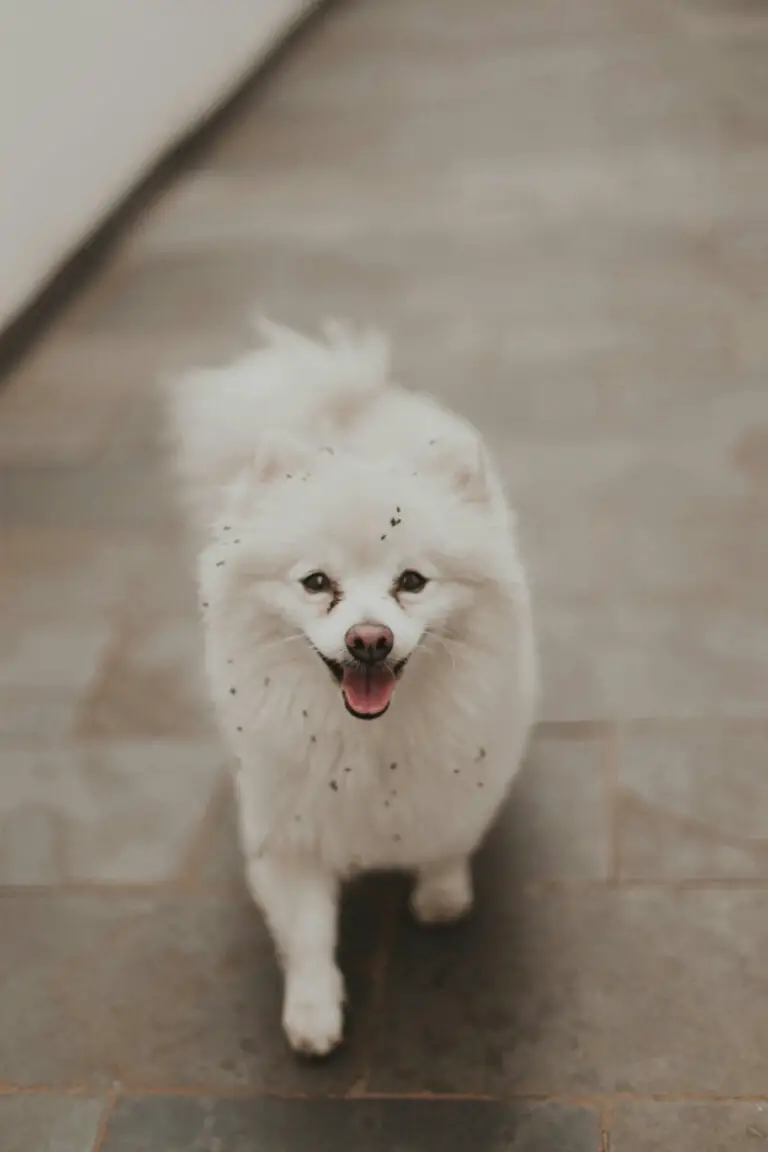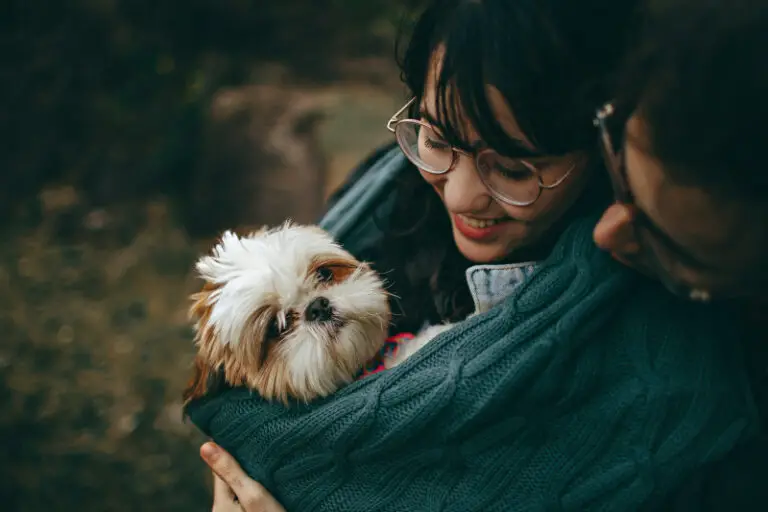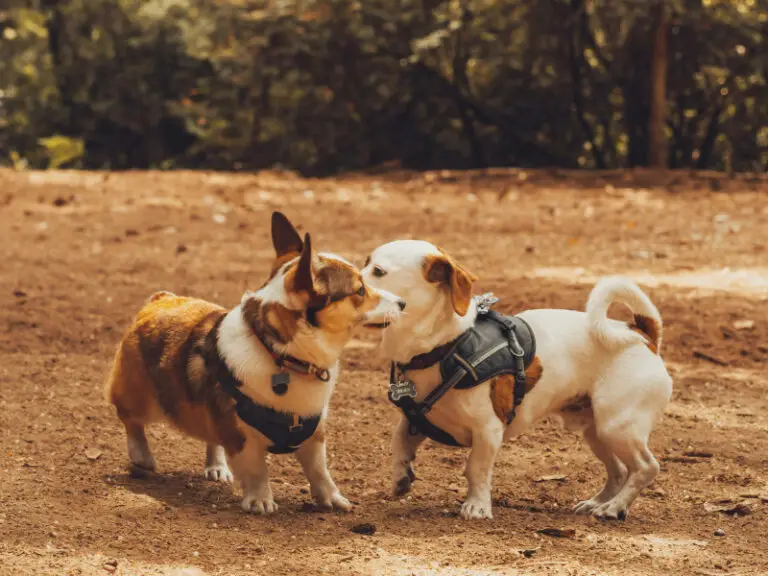The Chow Chow is a unique dog. Considered one of the oldest in the world, this Chinese breed with a serious, independent temperament, robust body, and shaggy coat looks like a cross between a dog, a bear, and a lion. But did you know that all chow chows are not exactly the same? Also, how many Chow Chow types are there?
In addition to the different colors that these dogs exhibit, experts distinguish between two main variations.
Read on below for more details on the types of Chow Chows, how they differ, what color these specimens can be, and how to tell if a Chow Chow is purebred or not.
Table of Contents
Chow Chow types
Depending on the characteristics of the coat, chow chows can be of two types: long or rough hair, and short or smooth hair. Both varieties are officially recognized by the main kennel clubs, including the FCI (Federation Cynologique Internationale) and the AKC (American Kennel Club).
The best-known type of Chow Chow is the long fluffy coat. Although also very popular, the short cape variant is not as common.
Let’s see what are the main features and differences to consider…
1. Long/rough-haired chow chow
The long-haired chow chow, sometimes called the American chow chow, is distinguished by its abundant coat, fluffy, but not overly long. The outer coat is straight and coarse, while the undercoat has a soft, wooly texture. The fur is normally thickest around the neck, framing the head area well.
Likewise, the tail and the back of the hind thighs present significant growth of “feather hairs”.
Coat length can vary between different longhaired chows; some may have it slightly longer than others. However, be warned that length does not deserve as much attention as texture and thickness.
Typically, the thick coat type is longer on males than females. This is especially visible in the area of hair around the neck.
2. Short-haired/straight-haired chow chow
The second type of Chow Chow is characterized by a short, bushy, straight coat, with a velvety or shaggy texture. It has a hard, dense outer coat and a smooth, well-defined undercoat. As expected, these specimens look smaller compared to their long-haired brothers.
To be considered short-haired, the Chow Chow must not show fluffy feathers or fur on its legs and tail. The coat around the neck and head should also be visibly less pompous.
Did you know…? To get a shorthaired Chow Chow puppy, one of the parents must have this type of coat. A short-haired dog can produce both short-haired and long-haired puppies if it has the “rough” gene and/or is bred with a long-haired partner.
The Chow Chow is an excellent medium-sized pet dog that can adapt to life in many different settings, including apartments. Since both types of Chow Chows have a double-layered coat, this breed is often recommended more for cold climates.
In hot places, Chow Chows need to spend most of their time indoors with air conditioning to prevent overheating.
See also: Furry Dog Breeds (Small, Medium, Large, White)
The 5 colors of the Chow Chow breed
Regardless of type, the Chow Chow breed exhibits 5 official colors:
- Black
- Blue
- Red
- Fawn
- Cream
These colors can be solid, range from light to dark, and even have lighter shades, but never in patches. It should be noted that color is often a feature widely used to talk about “types of chow chow” in the popular field.
The most common colors of the Chow Chow breed are red and black. Cream, blue, and fawn are considered less common. All five colors are seen in long-haired and short-haired chows.
Black chow chow
This Chow Chow can be solid black in color or have a sort of silvery-gray shading to the hindquarters and tail (variation accepted by the breed standard). Some specimens exhibit a natural reddish tint caused by sun exposure and molting cycles.
The black chow’s nose and lips are also black, while the eyes are a dark brown color. The roof of the mouth and gums are bluish-black, and the tongue is dark blue.
Blue chow chow
Result of the effect of the gene diluting in the color black, the blue tone refers to a grayish color. Blue chow chows can be solid or have silver shading on the tail and back of the thighs.
Like the black specimens, their fur also usually shows a reddish tint. The eyes are medium brown and the nose is not black, but a slate tone (dark gray). The tongue and palate vary from medium blue to dark blue. The lips and gums are grayish-blue.
Red chow chow
Red chow-chow ranges from a light golden hue to deep dark mahogany. Some dogs have an ombre red color, with the tail, neck area, and thighs a lighter shade. Most of these specimens have black gums, a dark blue tongue, a black nose and lips, and dark brown eyes.
The coat of red chow chow puppies is usually a bit faded, and both the muzzle and the tip of the tail are black. These characteristics change as the dog grows.
Chow chow fawn
The fawn color of the chow chow is the result of the influence of the diluted gene on the red coat. This can range from a light fawn to a dark cinnamon shade. Also, it can be solid or show a slight shading on the tail and the back of the thighs.
In puppies, the coat varies from silver to a sandy color with grayish shades; sometimes the snout is also grey, but this changes as they grow.
The eyes of the fawn chow chow are a medium shade of brown and the nose is a dark gray (slate). The lips and gums are bluish-gray in color and the tongue is medium blue.
Cream chow chow
Cream chow chow can be solid or diluted in color. Many solid specimens have a pale cream coat, and some can be almost red (clear). Commonly, the tongue and palate are dark blue, the gums are a shade of pink, the lips are black, and the eyes are dark brown.
This type of chow chow always exhibits tan ears and a black nose with a pink tinge. It should be noted that the puppies are born with a black nose; it only turns pink with age.
Interesting fact. If you see a Chow Chow that appears to be red, but its nose is noticeably pinkish, then it is not a red dog, but rather a dark cream.
In the case of dilute creams, some have been known to have almost white fur, except for several shaded areas of the body and tan-beige ears. The nose is dark gray, also with a pink pigment.
The tongue and palate are bluish-grey, the gums are pink, and the eyes are medium brown.
Mixed types of chow chow
Some dogs combine the characteristics of the Chow chow with traits of other well-loved breeds. Although they are not considered true chow chows, many of these hybrid or mixed chows are very popular. These include:
- Chow Sheperd (chow chow cross with German shepherd). It tends to have facial features more similar to the German Shepherd parent and a coat resembling the Chow Chow parent.
- Corgi chow (cross of corgi and chow chow). The most likely result is a puppy with a shaggy coat and a small to medium size.
- Chusky (husky and chow chow mix). This mix produces a medium-large-sized dog with a shaggy appearance and erect triangular ears.
- Chabrador (a cross between a chow chow and a labrador). A Chabrador puppy’s temperament can lean toward the side of the Labrador parent, or conversely, that of the Chow Chow parent.
- Golden chow (a cross between a golden retriever and chow chow). This type of mixed chow chow is usually a medium-sized dog, a thick and fluffy coat/tail. Likewise, a golden chow can be territorial like its chow parent, or familiar and outgoing like the retriever parent.
Note. The number in the image corresponds to the breed number in the list above.
Recommended:
Quick Answers to Frequently Asked Questions
How to know if a chow chow is purebred?
To confirm that a chow chow puppy is 100% pure, it is necessary for the breeder to provide information on the purity of his bloodline. Most reputable breeders have an official registry that vouches for the pedigree of their specimens.
A Chow Chow may appear true to the breed standard at first glance, but if there is no evidence to prove it, then there is no guarantee that it is truly pure.
Note. In the absence of official documents, an alternative is to take a DNA test.
In addition, it is also advisable to pay attention to certain physical characteristics, which, although they are not definitive, can be very enlightening. For example, a stock chow chow should have a dark blue tongue as early as 8-10 weeks of age.
The head is significantly large and broad, with a flat skull. The muzzle is wide, pronounced, and the nostrils are wide open. The teeth should meet in a scissor bite shape.
The ears are small, triangular, and rounded at the tip. The almond-shaped eyes are dark and deep-set.
The hind legs are nearly straight, a trait that makes walking seem somewhat forced.



